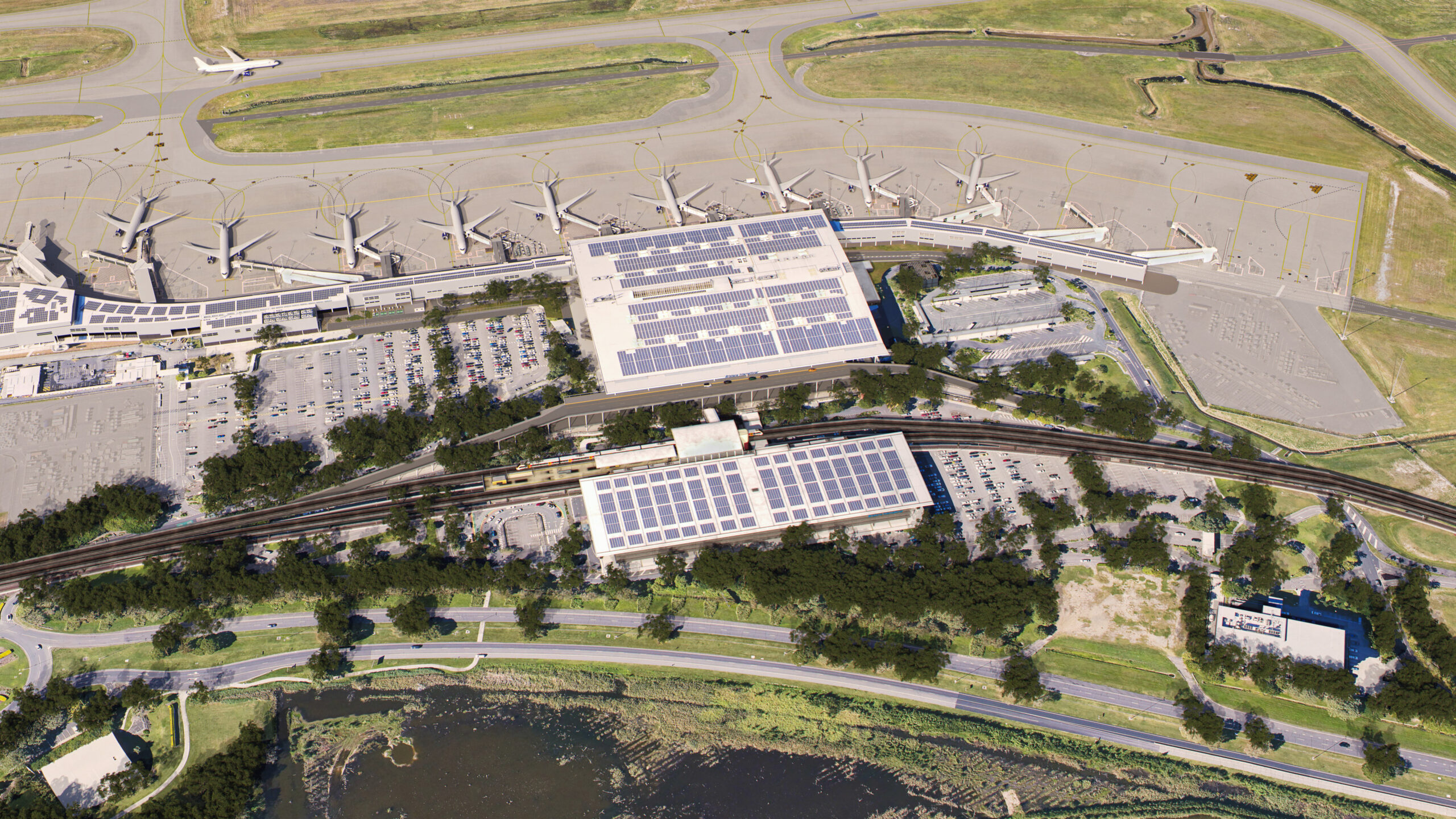As Brisbane marks 100 years of aviation history, its airport stands as both a monument to the past and a symbol of the city’s forward momentum. From humble beginnings at Eagle Farm to the internationally awarded design of today’s terminals, Brisbane Airport has grown into one of Australia’s key transport hubs — and a proud architectural statement of Queensland’s identity.
This year, the International Terminal celebrates its 30th anniversary. Alongside it, the Domestic Terminal continues its vital role as the most connected domestic network in the country. Together, these terminals do more than move people — they shape how the world experiences Brisbane.
The International Terminal: Design That Moves

Since opening in 1995, the International Terminal has embodied a bold architectural vision: to create an airport experience that feels uniquely Brisbane. The terminal’s design was pioneering for its time — purposefully light-filled, open, and infused with elements of the subtropical landscape.
Instead of the stark, utilitarian style typical of airports in the 1990s, this terminal introduced a new paradigm: placemaking in transit. Gardens sprawl across 55 hectares of landscaped space, interiors are softened with timber finishes, and gathering spaces mimic the informality of Queensland’s outdoor lifestyle. Skylights flood the terminal with sunshine, while leafy greenery and stone surfaces — including locally sourced Brisbane tuff — reinforce a deep connection to place.
A standout architectural feature is The Green, a central departures garden designed to slow the pace and elevate the passenger experience. It’s more than a waiting area — it’s a moment of calm before take-off.
Even the art is structural. The terminal houses a 750-metre-long mural by the late Indigenous artist Sally Gabori — a monumental gesture of welcome that greets international arrivals with colour, story, and cultural depth.
From its jet bridges to its design language, the terminal combines form and function in a way that still feels fresh three decades later. And with Future BNE upgrades underway — including new security screening zones and reimagined retail spaces — the terminal’s next era promises to be just as architecturally thoughtful.
The Domestic Terminal: Efficiency Meets Atmosphere

Opened in 1988, Brisbane’s Domestic Terminal was designed with Expo 88 in mind — and it shows. Even today, the design carries a sense of optimism and ambition.
The architecture focused on intuitive passenger flow, with elevated walkways offering sweeping views of the terminal and airfield. A vaulted ceiling with skylights bathes the concourses in natural light, enhancing the openness and visibility throughout. Tropical planting softened the interior landscape, offering a warm Queensland welcome from the moment of arrival.
Each major airline was given its own concourse, resulting in distinct architectural zones. While practical, this segmentation also allowed for tailored aesthetics and future flexibility. Today, this terminal continues to adapt through considered design upgrades — including retail precinct enhancements, expanded lounges, and infrastructure that quietly supports the daily movement of tens of thousands of travellers.
Under the current Future BNE masterplan, the Domestic Terminal is undergoing significant modernisation, from a world-class baggage system to new car parks and Skywalk-connected access points. The focus remains the same: efficient, enjoyable, human-centred travel.
Architecture as Experience

What sets Brisbane Airport apart is how its architecture tells the city’s story. It’s not just about terminals — it’s about texture, light, local materials, and the subtle cues that say: you’re in Queensland now.
From the stone underfoot to the native plantings at eye level and the ceiling planes above, every architectural decision at Brisbane Airport is anchored in place and purpose. Whether you’re arriving from overseas or flying to Townsville, the spaces you move through are designed to welcome, reflect and inspire.
As part of Brisbane Open House 2025, the airport will open its doors to visitors for a rare look behind the scenes. From guided tours to an Urban Sketchers workshop, it’s a chance to experience this extraordinary piece of infrastructure — and architecture — in a whole new way. Discover more here.
Information for this article courtesy of Brisbane Airport. Read more here.
